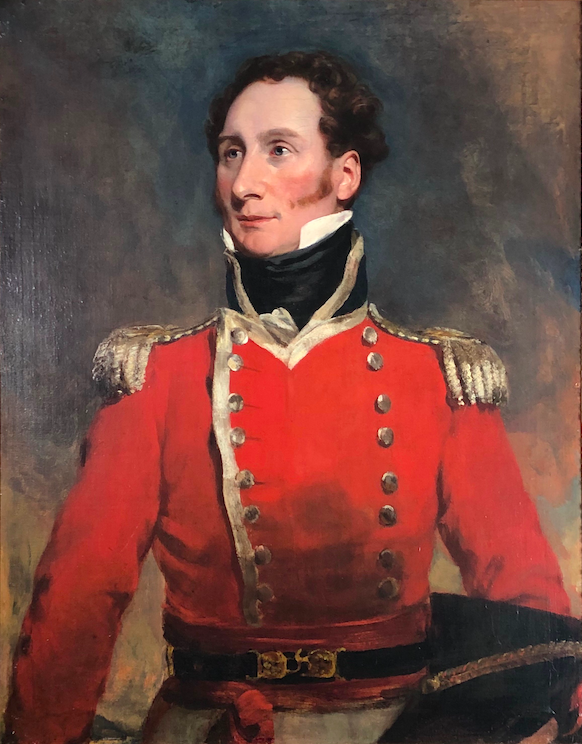
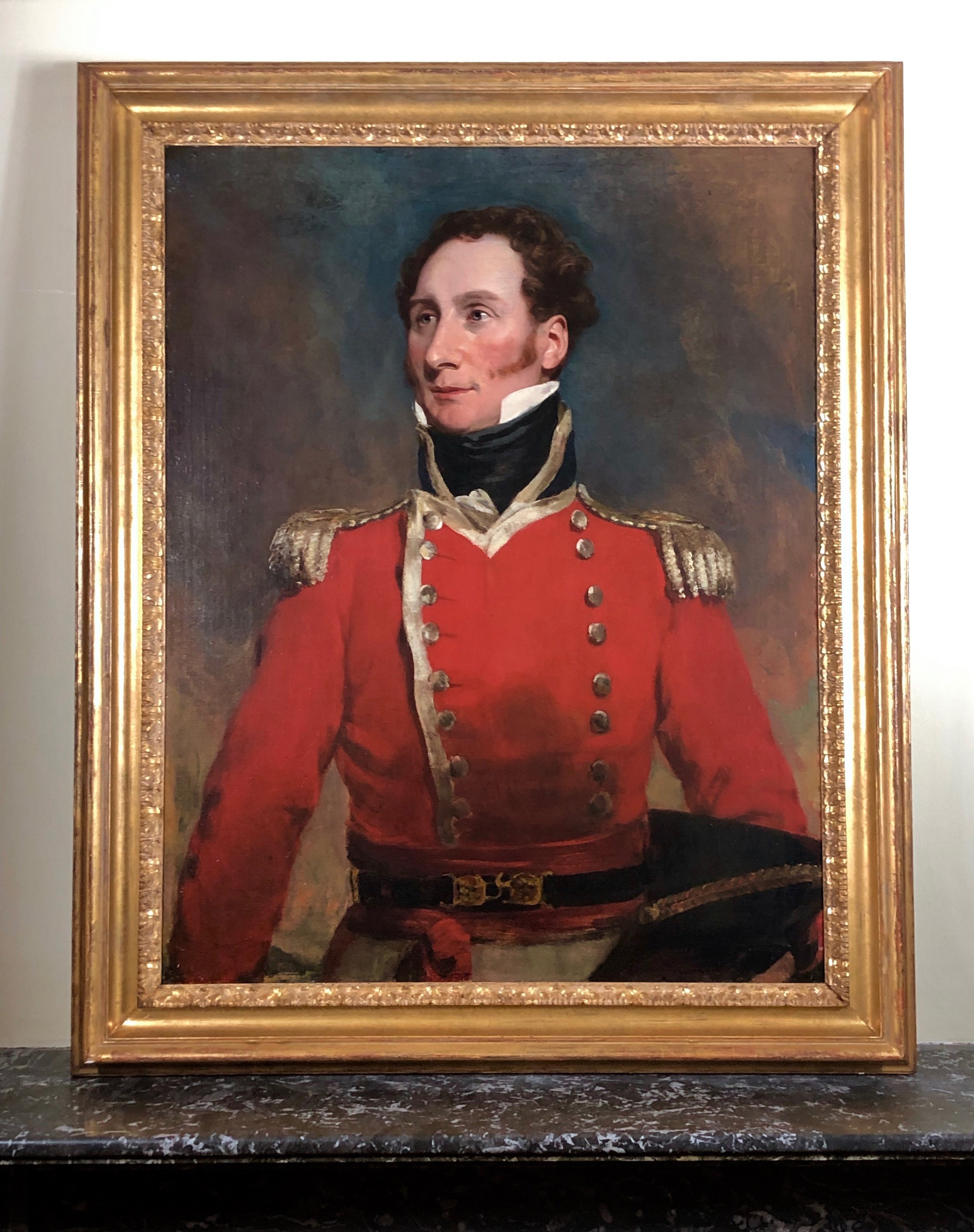
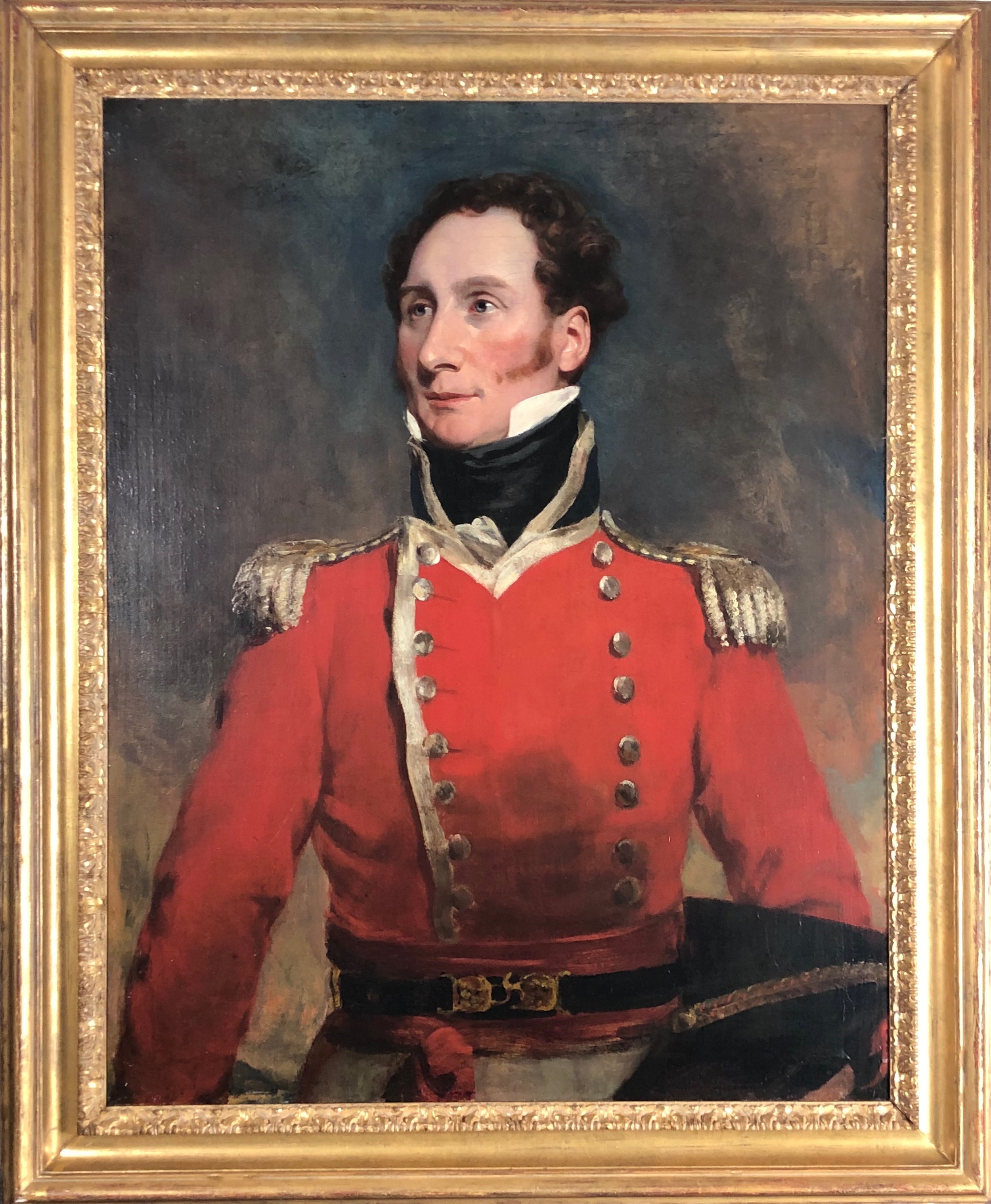

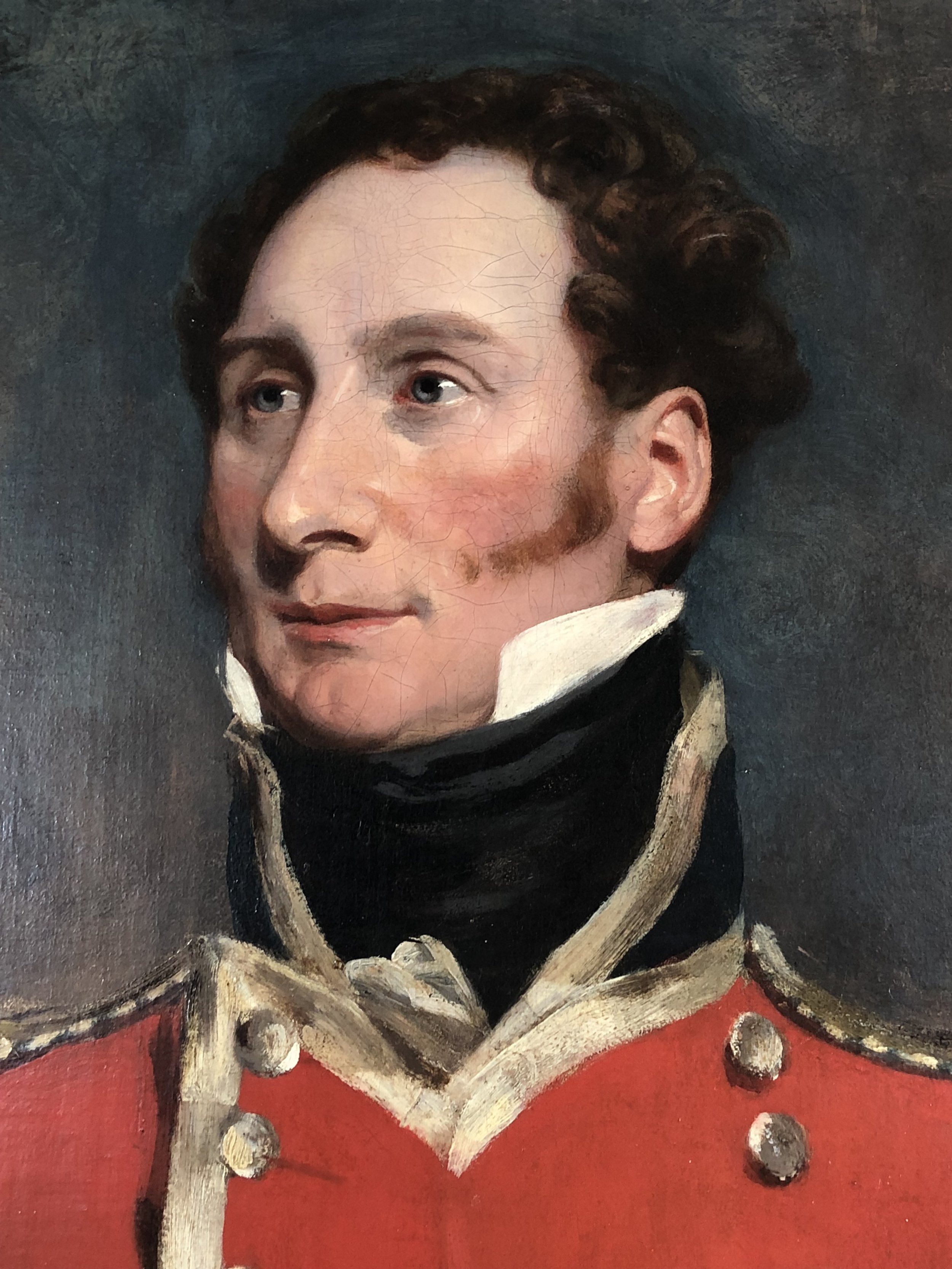
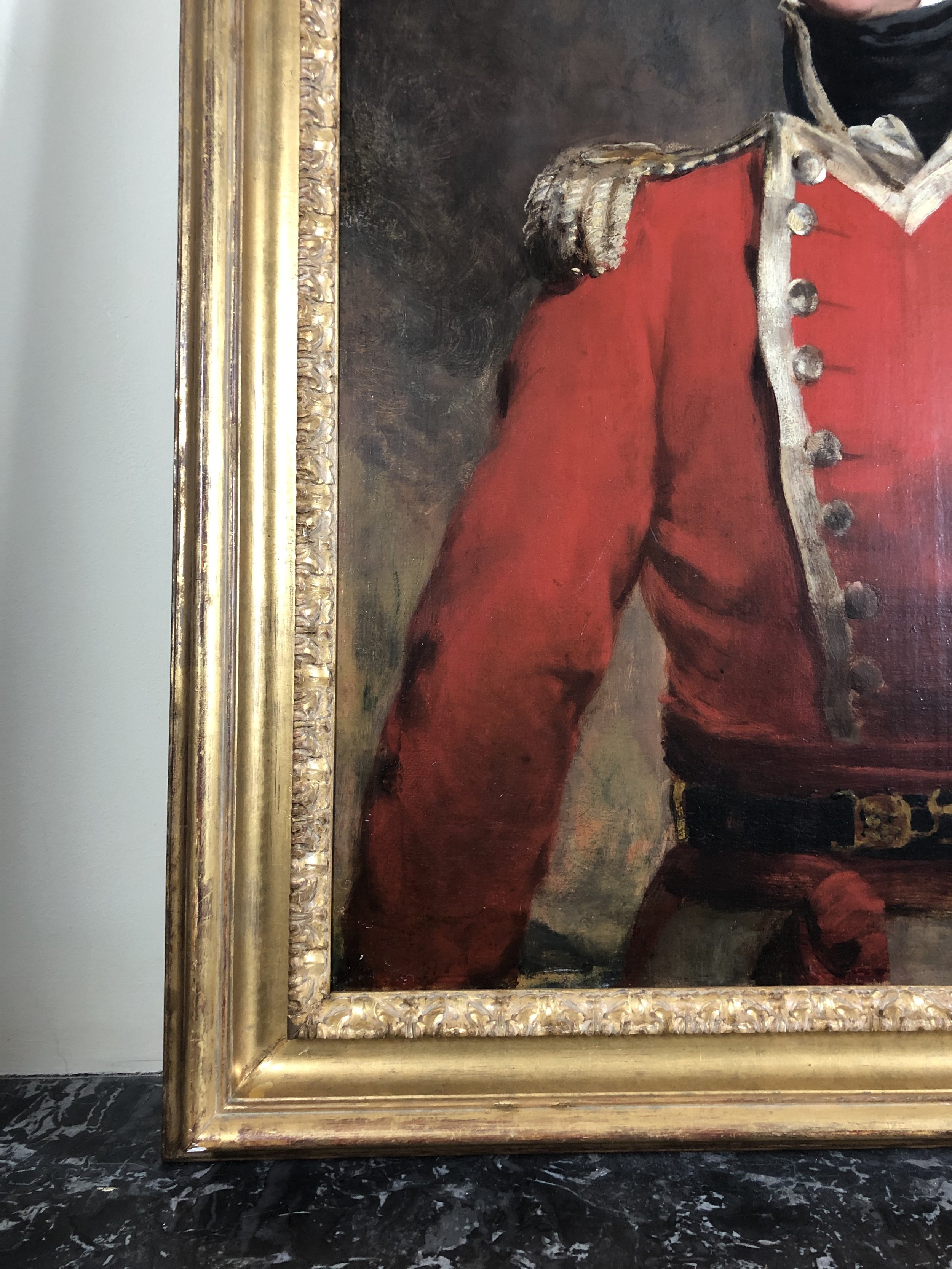
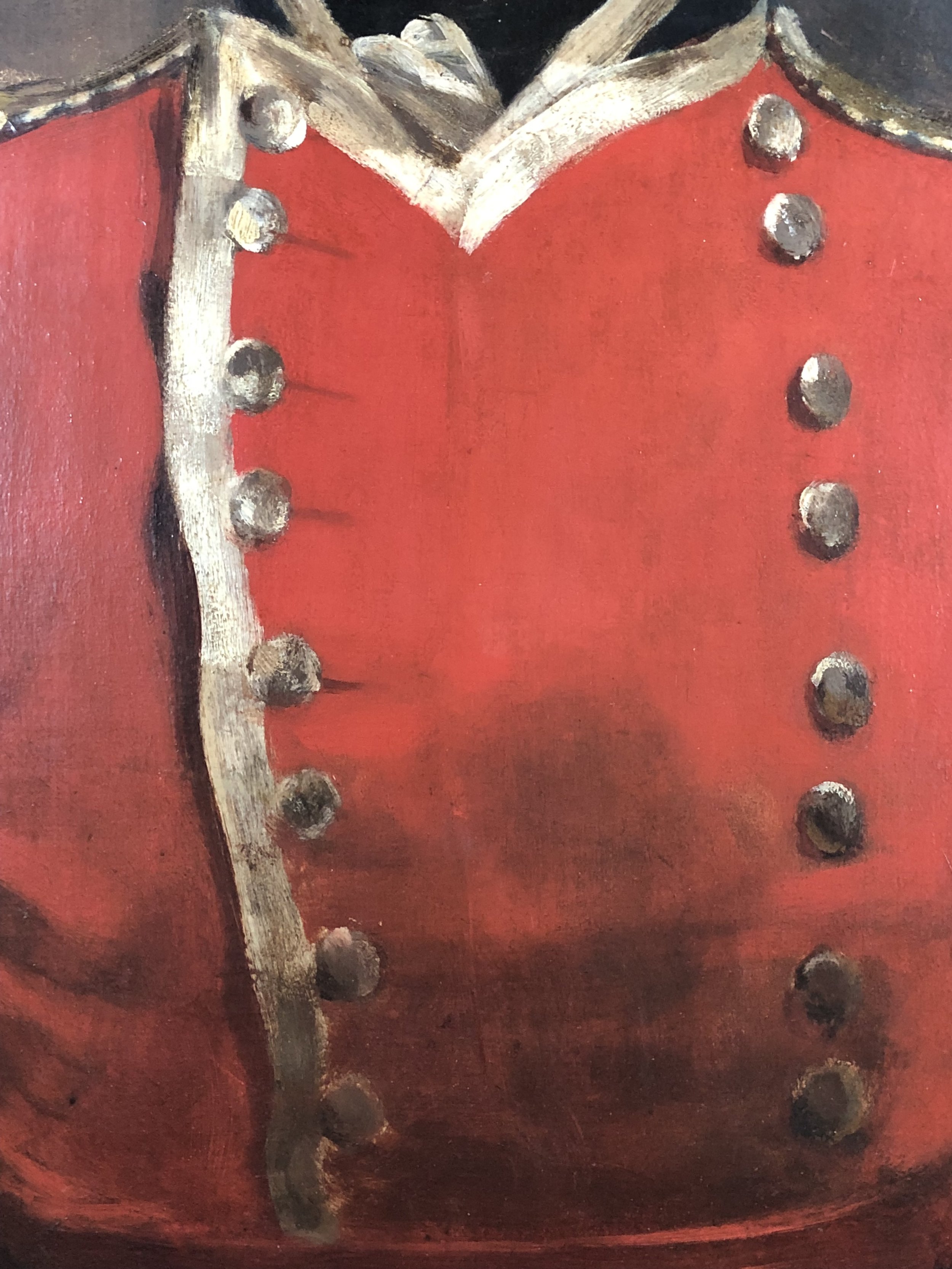
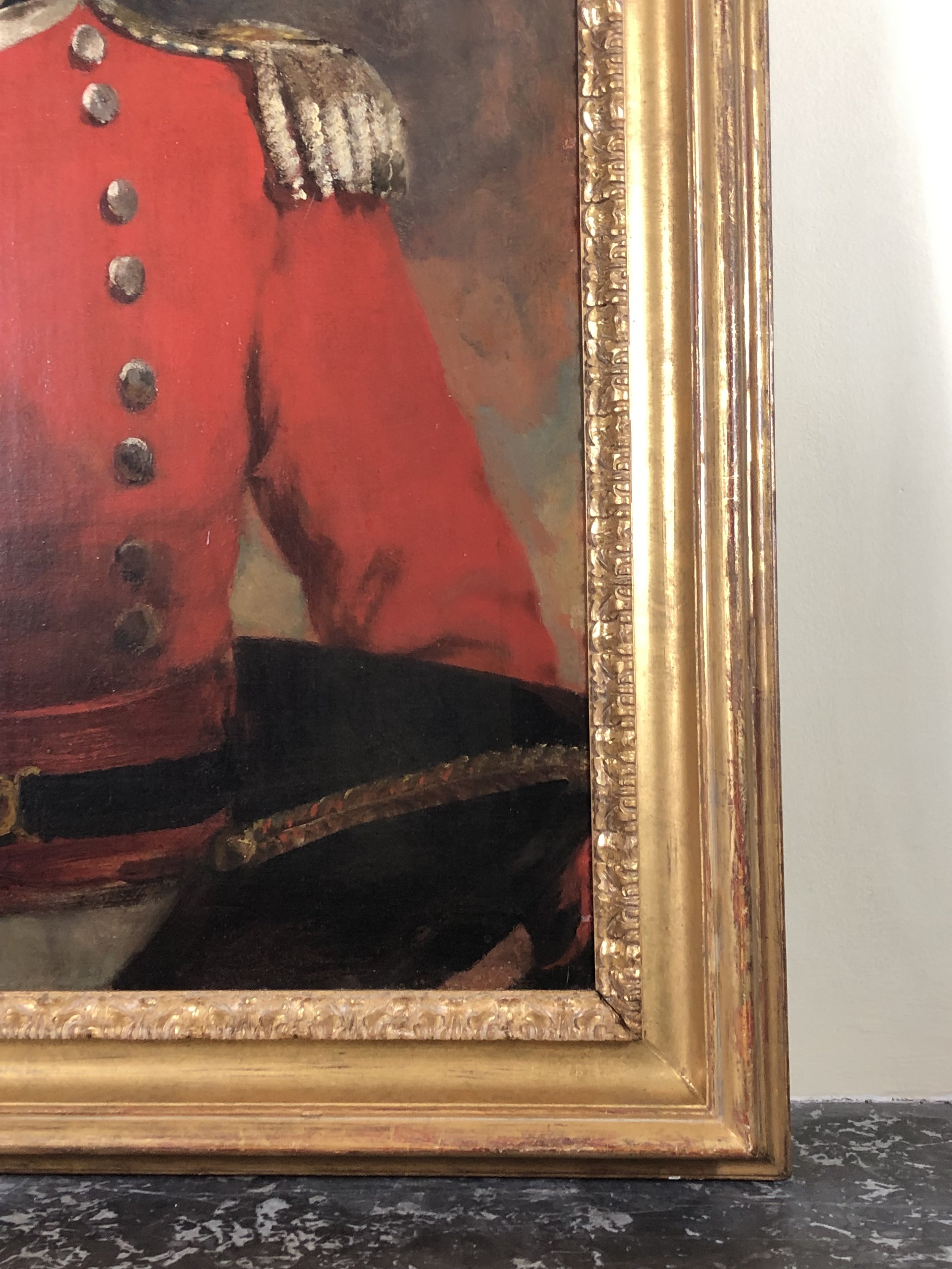
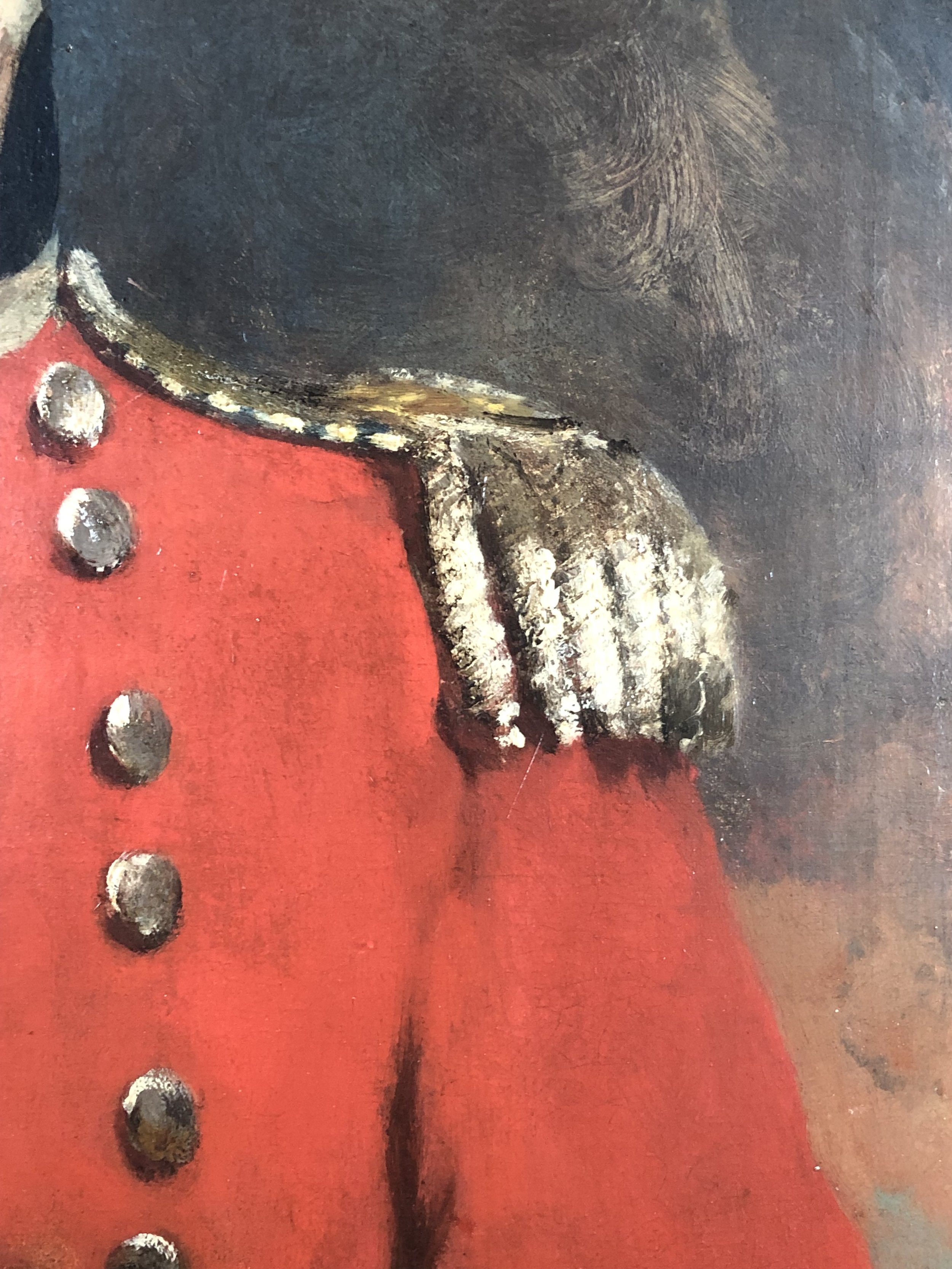
EARLY 19TH CENTURY PORTRAIT OF A SENIOR FIELD OFFICER - ATTRIBUTED TO GEORGE HENRY HARLOW R.A
A striking, atmospheric and fine quality early 19th century portrait of a Senior Field Officer. This dashing gentleman was at least a Major and possibly more senior in rank, he stands proudly, half length, his eyes to left upon the battlefield.
It seems highly likely that this gentleman performed his duties on horseback. Firstly he wears no gorget and mounted officers did not wear them because they would bounce around inconveniently with the motion of the horse. The sword belt around his waist also implies that he was mounted because his sword (invisible) was clearly being carried from two slings connected to rings on the scabbard in the cavalry fashion.
The shape of the lapel and also the positioning of the buttons suggests that this picture shows an infantry officers' uniform from 1816 onwards. The combination of dark blue facings - only seen here on the collar, and silver lace, makes it difficult to identify his specific regiment as there were many regiments that used this combination.
George Henry Harlow R.A. (1787-1819)
This highly-regarded English portrait painter was born in St. James's Street, London, on 10 June 1787 and was for a short time at Westminster School, but having shown a predilection for painting, he was placed under Henry De Cort, the landscape-painter. He next worked under Samuel Drummond, A.R.A., the portrait-painter, but after about a year entered the studio of Sir Thomas Lawrence, P.R.A.
Harlow determined to devote himself to painting, he remained for about eighteen months in Lawrence's studio, copying his pictures, and occasionally drawing preliminary portions of Lawrence's own productions. A difference about Harlow's work for one of Lawrence's pictures led to a breach with Lawrence. Young, headstrong, and impatient of restraint, with a handsome person and amiable disposition, he was generally popular in society. He worked, however, with industry and enthusiasm in his art. He exhibited for the first time at the Academy in 1804, sending a portrait of Dr. Thornton. In later years he exhibited many other portraits; his portraits are well conceived, and, though much in the manner and style of Lawrence, have a character of their own. His portraits of ladies were always graceful and pleasing.
In 1818 Harlow visited Italy for the purpose of studying the old masters. At Rome his personal gifts and accomplishments made him the hero of the day. He was elected a member for merit of the Academy of St. Luke at Rome, a most unusual distinction for an English artist, and was invited to paint his own portrait for the Uffizi gallery of painters at Florence. His artistic progress in Italy was remarkable, but on his return to England on 13 Jan. 1819 he was seized with a glandular affection of the throat, which proved fatal on 4 Feb. He was in his thirty-second year. He was buried under the altar of St. James's, Piccadilly, and his funeral was attended by the eminent artists of the day.
Many of his portraits have been engraved, and those of James Northcote, Fuseli, Thomas Stothard, William Beechey, John Flaxman, and others are highly esteemed. His own portrait, painted by himself for the gallery at Florence, was engraved for Ranalli's Imperiale e Reale Galleria di Firenze.
Higher resolution images on request. Worldwide shipping available.
Canvas : 37" x 29" / 94m x 74cm. Frame: 40" x 34” / 100cm x 86cm. Internal Ref: 00076
Price: £7250

